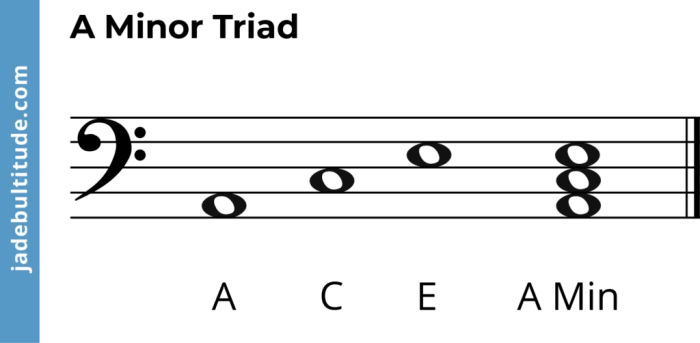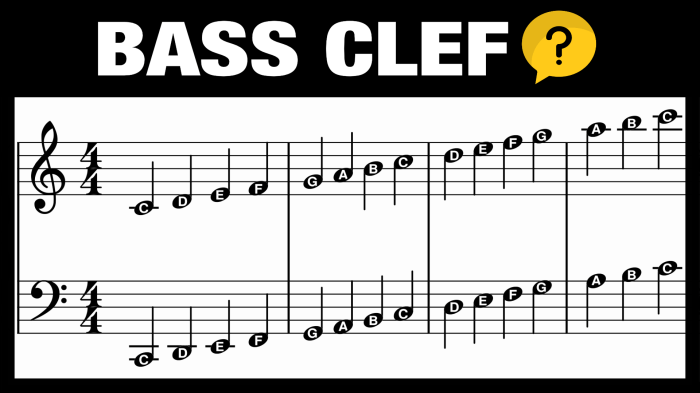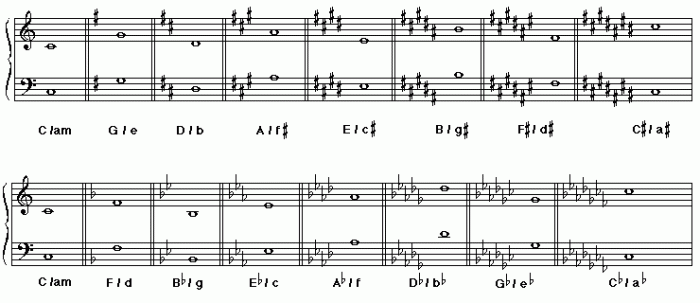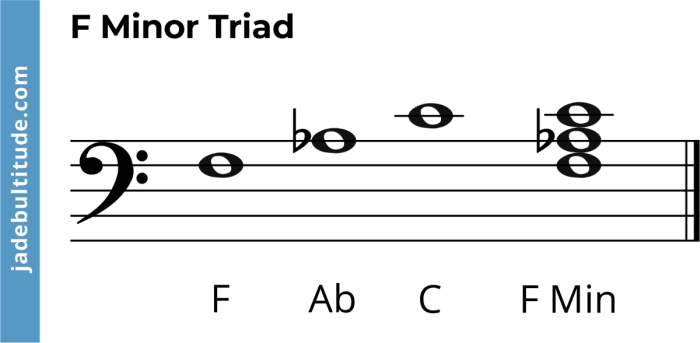Step into the realm of music theory with the enchanting A minor triad bass clef. This enigmatic musical element holds the power to evoke emotions and add depth to compositions, making it an essential tool for musicians and music enthusiasts alike.
Delve into the intricate composition of minor triads in bass clef, discover their inversions and their impact on musical progressions. Explore how minor triads contribute to the rich tapestry of musical styles, from classical to jazz and beyond.
Definition of a Minor Triad Bass Clef

A minor triad in bass clef is a three-note chord composed of the root, minor third, and perfect fifth. The root is the fundamental note of the chord, the minor third is one semitone below the major third, and the perfect fifth is seven semitones above the root.
The minor triad bass clef is a fundamental musical element that underpins many compositions. If you’re looking to delve deeper into music theory and improve your understanding of this topic, check out unit 5 session 2 letrs . This resource provides valuable insights and practical exercises that will enhance your comprehension of the minor triad bass clef and its applications in musical arrangements.
Examples of Minor Triads in Bass Clef, A minor triad bass clef
Here are some examples of minor triads in bass clef:
- C minor: C, Eb, G
- G minor: G, Bb, D
- D minor: D, F, A
Function of Minor Triads in Musical Compositions
Minor triads are commonly used in musical compositions to create a sense of sadness, melancholy, or tension. They are often found in minor key pieces, but can also be used in major key pieces to add contrast or create a sense of unresolved tension.
Inversions of a Minor Triad Bass Clef

Inversions of a minor triad in bass clef occur when the notes of the triad are rearranged, with a different note in the bass. There are three inversions of a minor triad:
- First inversion: The third of the triad is in the bass.
- Second inversion: The fifth of the triad is in the bass.
- Third inversion: The root of the triad is in the bass.
Here are the fingerings for each inversion:
- First inversion: 1-2-4
- Second inversion: 1-3-4
- Third inversion: 1-2-3
Inversions are used in musical compositions to create different harmonic effects. For example, first inversions can create a sense of instability, while second inversions can create a sense of suspension. Third inversions are often used to end a phrase or section of music.
Harmonic Progressions Involving Minor Triads Bass Clef

Minor triads are essential building blocks in music, creating a sense of tension and resolution that drives the harmonic movement of many compositions. In bass clef, minor triads provide a solid foundation for harmonic progressions that evoke a range of emotions and musical styles.
Common Harmonic Progressions
One of the most common harmonic progressions involving minor triads is the i- IV – V progression. This progression moves from the root position of the minor triad to the fourth and then to the fifth degree of the scale.
It creates a sense of forward motion and resolution, often used in pop, rock, and folk music.
Another common progression is the ii- V – i progression. This progression moves from the second to the fifth and then to the root position of the minor triad. It creates a more suspended and unresolved sound, often used in classical and jazz music.
Role of Minor Triads
Minor triads play a crucial role in creating tension and resolution in music. The dissonance between the minor third and perfect fifth creates a sense of instability that demands resolution. When the minor triad resolves to a major triad, such as in the i – IV – V progression, the tension is released, creating a satisfying sense of closure.
Conversely, when a minor triad resolves to another minor triad, such as in the ii – V – i progression, the tension is maintained, creating a sense of suspension and unresolved anticipation.
Use of Minor Triads Bass Clef in Different Musical Styles

Minor triads are a fundamental harmonic element in various musical styles, contributing significantly to the overall sound and emotional impact of compositions. In bass clef, minor triads serve as a foundation for chord progressions, bass lines, and melodic accompaniment.
Classical Music
In classical music, minor triads play a crucial role in creating contrast and drama. The use of minor chords can evoke a sense of sadness, melancholy, or introspection, providing a balance to the more uplifting major chords. For instance, in Beethoven’s “Moonlight Sonata,” the opening minor triad sets the tone for the piece’s somber and reflective character.
Jazz
In jazz, minor triads are frequently employed in improvisation and harmonic progressions. Jazz musicians often use minor triads to create tension and resolve it through the use of secondary dominants or chromaticism. For example, in Miles Davis’s “So What,” the minor triad in the bassline adds a sense of harmonic complexity and intrigue.
Popular Music
Minor triads are prevalent in popular music, particularly in genres such as rock, pop, and blues. They provide a foundation for creating a wide range of moods, from somber and introspective to energetic and rebellious. For instance, in The Beatles’ “Yesterday,” the minor triad in the bassline contributes to the song’s poignant and melancholic atmosphere.
Answers to Common Questions
What is the composition of an A minor triad in bass clef?
An A minor triad in bass clef consists of the notes A, C, and E, with A as the root note.
How many inversions does an A minor triad have?
An A minor triad has three inversions: first inversion (C in the bass), second inversion (E in the bass), and third inversion (G in the bass).
What is the function of minor triads in musical compositions?
Minor triads often create a sense of tension and resolution, adding depth and emotional impact to music.
